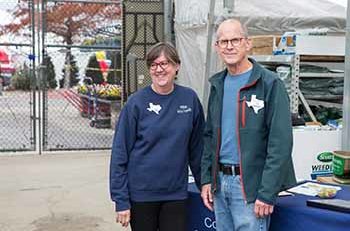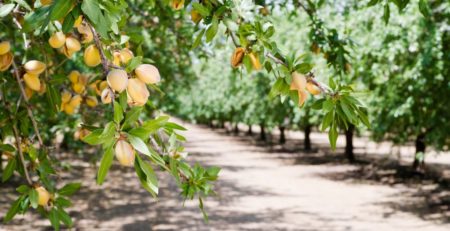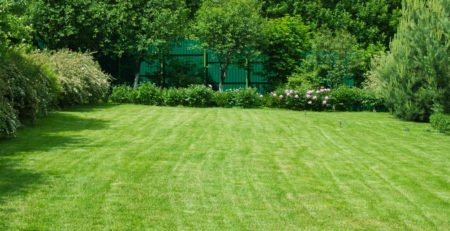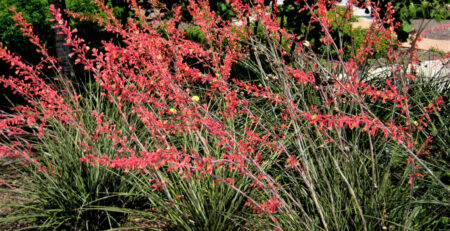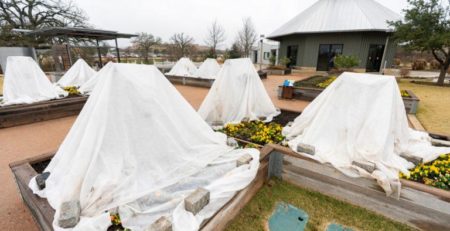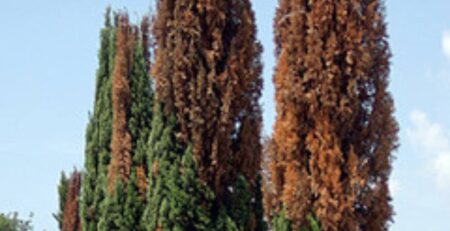Should Artificial Turf Have A Place In Our Landscapes?
The use of artificial turf can be a contentious issue. Artificial turf is advertised as a water saving, “environmentally friendly” alternative to natural turf. This comparison is deceptive however, because natural turf and other living plant materials provide environmental services that artificial turf does not. Although artificial turf may save water and eliminate the need for fertilizers, the installation of the product involves some decidedly “unfriendly” environmental practices. Before making a decision, consider the role that living plants and soils play in the ecosystem and understand that the removal of plants and soils leads to an increase in urban stormwater run-off and an increase in the urban heat island effect. https://oehha.ca.gov/media/downloads/ecotoxicology/fact-sheet/watercyclefacts_0.pdf
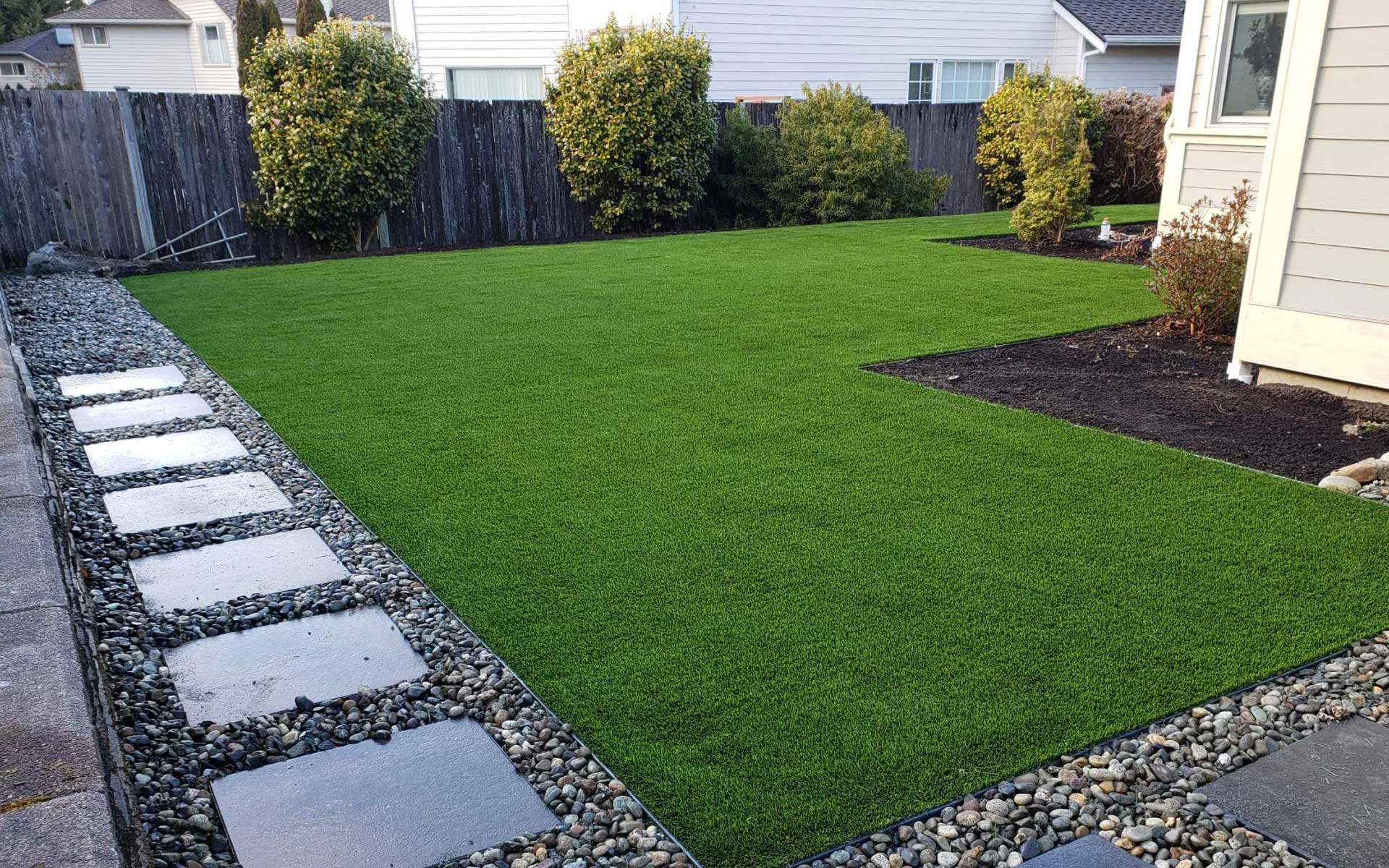
Natural turfgrass can reduce surface water runoff by allowing more water to be absorbed into the soil to the benefit of groundwater reserves. Grass and other living groundcovers can prevent erosion, replenish air, regulate temperatures, sequester carbon, support bio-remediation and even help with noise. Plants foster healthy soils and provide habitat for wildlife. https://www.nps.gov/articles/000/benefits-of-sustainably-managed-turf.htm
Artificial turf functions more like a hardscape. In order to install the product, all existing vegetation is removed along with several layers of topsoil. Then a layer of crushed rock is applied and the entire surface is heavily compacted. By removing vegetation and compacting the underlying soil, you create an impervious surface that water may not be able to penetrate. If water passing through the turf
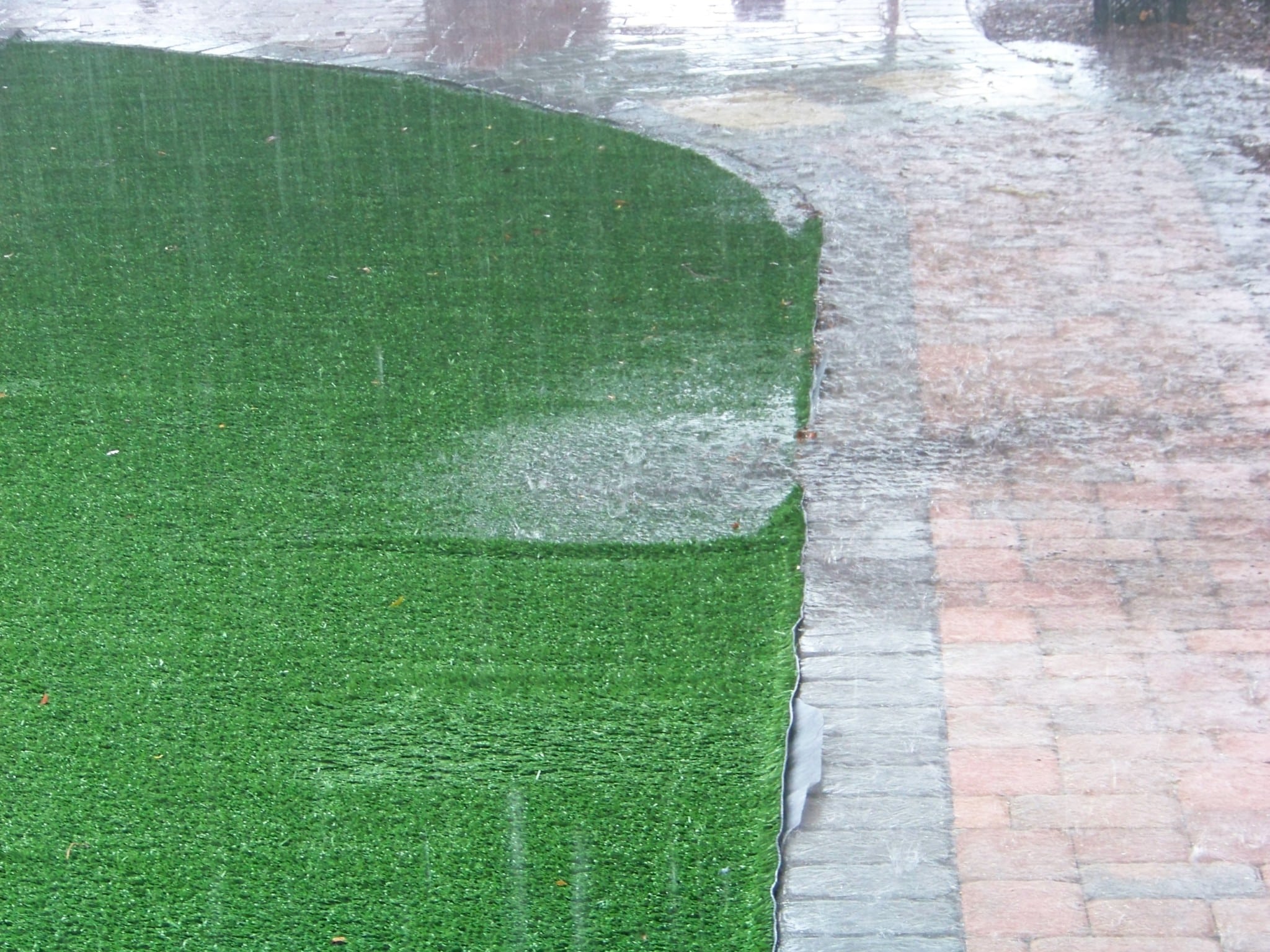
backing cannot be absorbed into the soil than it will either run off or stagnate. Studies have shown that stormwater runs off artificial turf areas at a higher rate than areas covered with natural turf. https://www.sciencedirect.com/science/article/abs/pii/S0048969721020477. If the soil over the roots of trees and shrubs is compacted, air and water may not be available for the trees and their health may be impacted. Many cities in the United States consider artificial turf an impervious hardscape and regulate its use in the landscape.
Artificial turf can heat up. On a warm sunny day, the surface temperature of artificial turf can be 40-70°F greater than the surrounding air temperature. In a small yard, this increase in heat may seem insignificant, but this effect, when multiplied many times across many neighborhoods can lead to the creation of heat islands with their associated environmental impacts. The water used in hosing down the turf to cool it, along with water needed for periodic cleaning, may offset some of the overall water savings. https://plantscience.psu.edu/research/centers/ssrc/documents/temperature.pdf
From an ecological and environmental standpoint, a better choice would be designing a landscape that utilizes the “rule of thirds” by planting 1/3 drought tolerant turfgrass, 1/3 native and adapted plants and 1/3 pervious hardscape. This could mean using artificial turf as a hardscape in a limited part of the yard, while retaining the benefits that plants and soil provide. https://twri.tamu.edu/media/5434/water-efficient-landscape-updated-january-14-2020_reorg2.pdf
It is significant to note that many cities in arid climates have stopped considering artificial turf as eligible for their “Cash for Grass” rebate programs due to the ecological impacts that result from the product’s installation and maintenance.
There are many other problems associated with the use of artificial turf. Below are some links with additional insights into this issue:
https://suwater.stanford.edu/sites/g/files/sbiybj19876/files/media/file/scvwd_artificialturf.pdf
https://westernresourceadvocates.org/wp-content/uploads/2023/01/2022_WRA_Artifical_Turf_Report.pdf
https://edis.ifas.ufl.edu/publication/EP612
https://syntheticgrasswarehouse.com/company/ask-an-expert/ask-jw/synthetic-turf-drainage-flooding/




